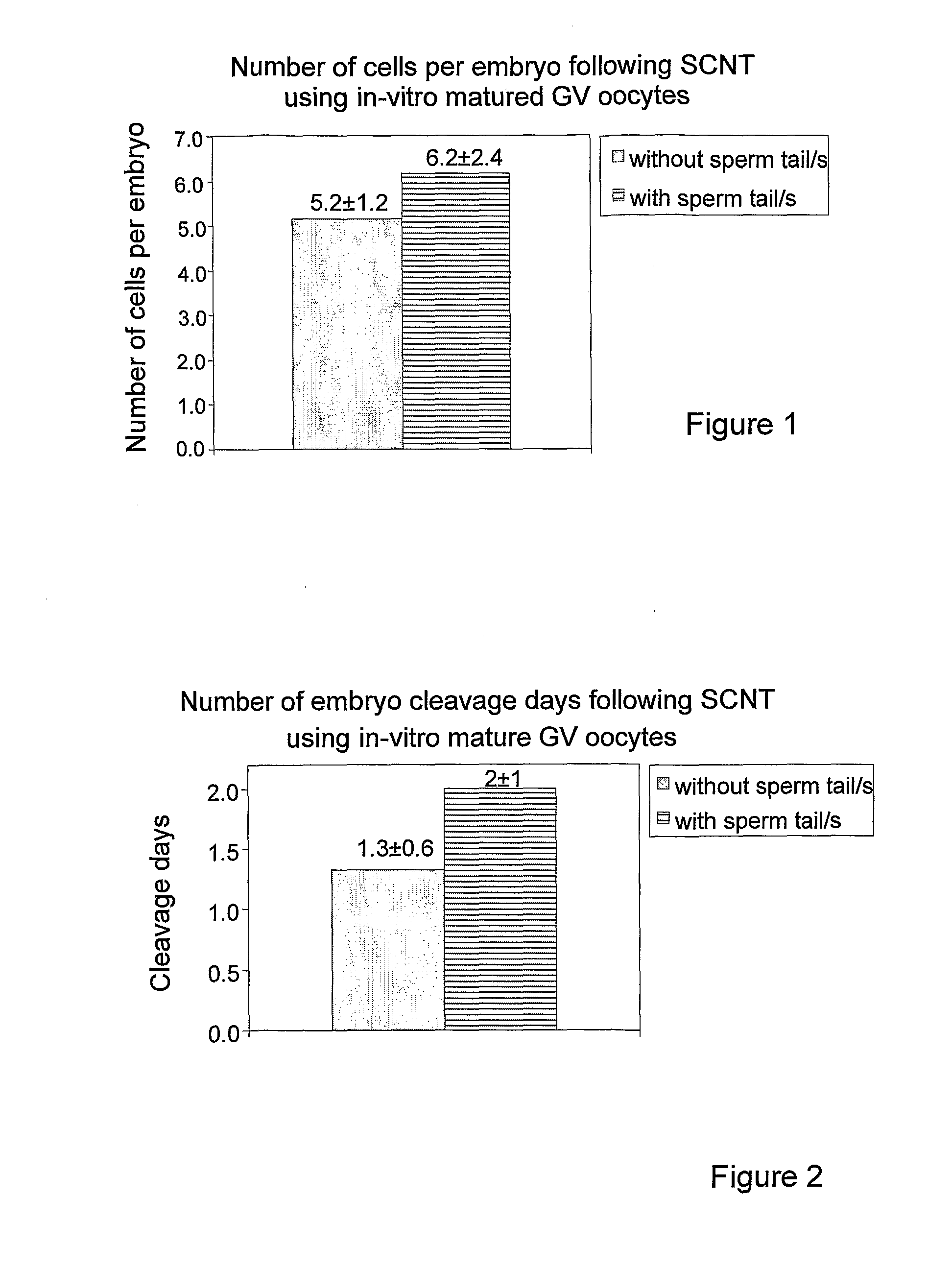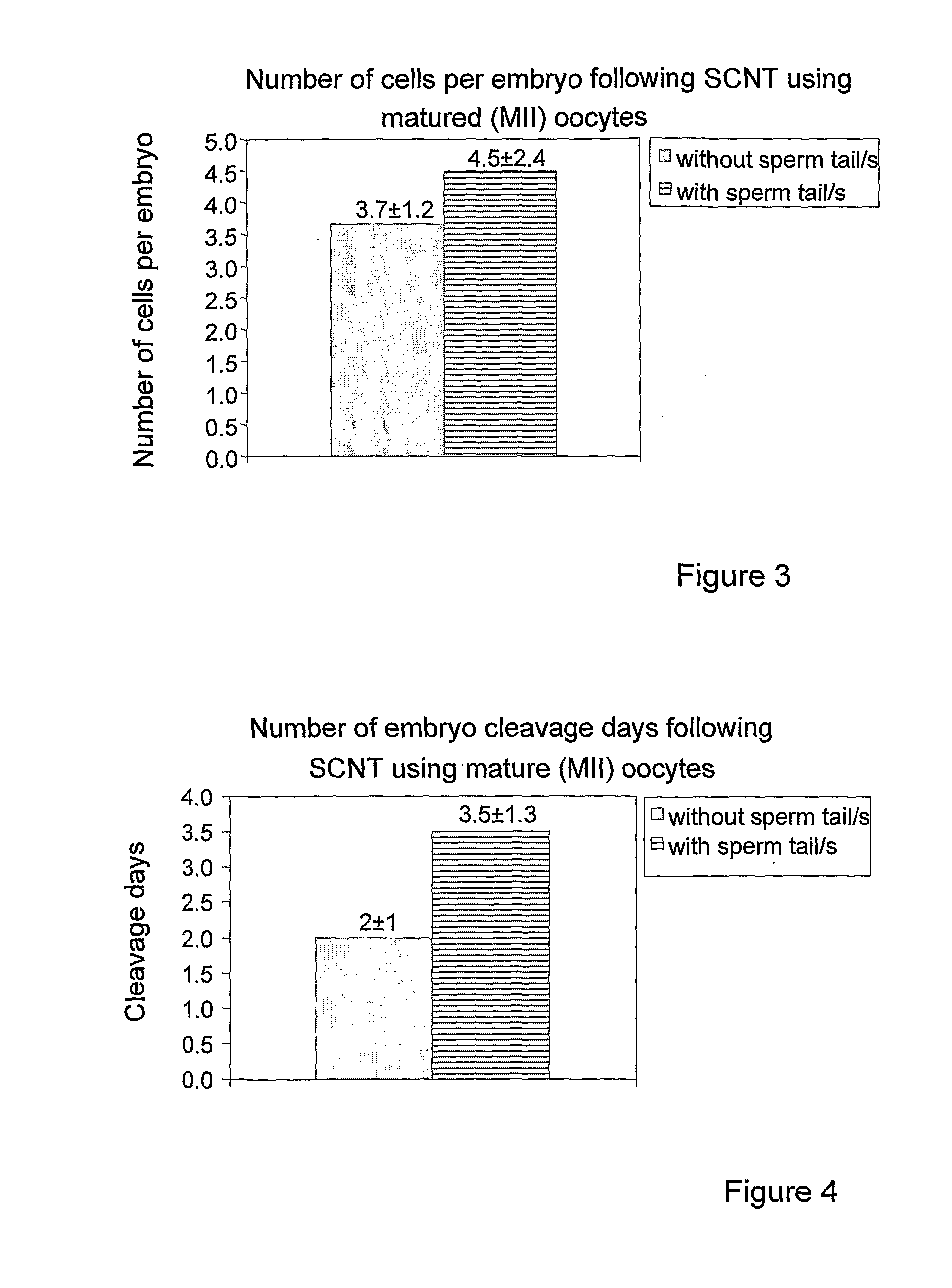Method and system for somatic cell nuclear transfer
a somatic cell and nuclear transfer technology, applied in the field of somatic cell nuclear transfer methods and systems, can solve the problems of high inefficiency of scnt, inability to achieve high-efficiency scnt, etc., and achieve the effect of reducing the number of different species, improving the technology, and improving the efficiency of scn
- Summary
- Abstract
- Description
- Claims
- Application Information
AI Technical Summary
Benefits of technology
Problems solved by technology
Method used
Image
Examples
Embodiment Construction
[0085]Materials
[0086]Activation Medium:
[0087]0.3 M Manitol, 0.1 mM MgSO4, 50 μM CaCl2
[0088]Methods
[0089]Somatic Cell Nuclear Transfer
[0090]Preparation of Cytoplasts-Oocyte Enucleation:
[0091]Cumulus-free MII oocytes (that either matured in-vivo or GVs that matured in-vitro) with a visible first polar body were incubated in 5 μg / ml cytochalasin B in HTF-HEPES medium in a glass bottom plate for 30 min. During the incubation, the spindle apparatus (metaphase plate) of the oocytes was visualized using polarized light (LC-PolScope system of Cri Company). When the spindle was visible, a small hole was created in the zona pellucida near the spindle, using laser radiation. In cases where the polar body was far from the spindle, two holes were generated in the zona, one close to the polar body and the other close to the spindle. The spindle and the first polar body were aspirated from the oocyte using a blunt glass pipette OD 15 μm inserted through the hole in the zona pellucida.
[0092]Somati...
PUM
| Property | Measurement | Unit |
|---|---|---|
| concentration | aaaaa | aaaaa |
| diameter | aaaaa | aaaaa |
| plastic | aaaaa | aaaaa |
Abstract
Description
Claims
Application Information
 Login to View More
Login to View More - R&D
- Intellectual Property
- Life Sciences
- Materials
- Tech Scout
- Unparalleled Data Quality
- Higher Quality Content
- 60% Fewer Hallucinations
Browse by: Latest US Patents, China's latest patents, Technical Efficacy Thesaurus, Application Domain, Technology Topic, Popular Technical Reports.
© 2025 PatSnap. All rights reserved.Legal|Privacy policy|Modern Slavery Act Transparency Statement|Sitemap|About US| Contact US: help@patsnap.com


